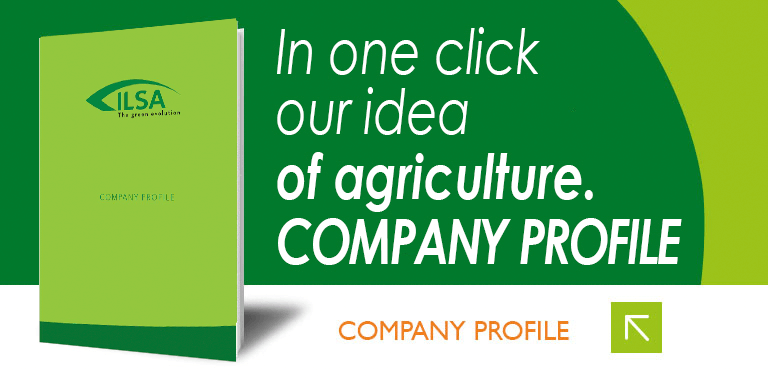Editorials
Eco-sustainability as a guide towards agriculture of the future
04/12/2023
In the fast-changing world where global population growth is relentless and the demand for food is also steadily increasing relative to the agricultural land area that remains more limited, a focus on environmentally sustainable agricultural practices is fundamental to ensure the success of agricultural crops, food security, and environmental protection. Environmentally sustainable agriculture emerges as the guiding beacon for an innovative agricultural sector where all stakeholders adopt environmentally sustainable technical means and agronomic solutions that respect the soil and environment, the end consumer, and future generations. In this article, we will explore the many facets of environmentally sustainable agriculture, highlighting how certain technical means, including organic fertilizers and biostimulants not only ensure the yield and final quality of crops, but also offer economic and social benefits.
What is eco-sustainability?
Eco-sustainability in agriculture refers to farming practices and technical means that aim to preserve and improve ecosystem (plant-soil-microorganism) health, while maintaining an economic and social balance.
This approach is based on methods that minimize the environmental impact of agricultural activities, promoting conservation of natural resources, soil fertility, biodiversity and reducing the use of harmful chemicals. The goal is to create an agricultural system that is sustainable in the long term, capable of providing food responsibly, respecting the environment and the health of the end consumer.

What solutions to adopt within the framework of eco-sustainability?
Among the various solutions that can be adopted within the framework of eco-sustainability in agriculture, we can mention:
- Responsible use of water resources: in a world where water management is a growing challenge, eco-sustainable agriculture is committed to using water resources responsibly. Adoption of efficient irrigation systems, rainwater, harvesting, and judicious water management are key components in preserving this precious asset.
- Renewable energy in the fields: integrating renewable energy sources into agriculture is a key step towards sustainability. The use of solar panels and wind turbines on farms not only reduces the environmental footprint but can also lead to significant long-term energy savings.
- Promotion of biodiversity: preserving biological diversity is a central goal of environmentally sustainable agriculture. Implementing areas dedicated to biodiversity, such as pastures and refuge areas for beneficial insects, help maintain a balanced ecosystem, promoting crop health and reducing pesticide dependance.
- Transparent communication: environmentally sustainable practices and technical means should be clearly communicated to end-user and end-consumers. Accurate and transparent labeling on technical means (e.g., fertilizers and biostimulants) provides users with the ability to make informed choices while rewarding the efforts of companies committed to sustainable agriculture.
- Reduction of chemical inputs: environmentally sustainable agriculture promotes the adoption of farming practices that reduce the use of chemicals that are harmful to the soil, the environment, and the end consumer. Crop rotation and integrated management and the use of organic fertilizers and natural biostimulants are just some of the strategies that help maintain soil fertility and ensure environmentally sustainable production. ILSA has always produced organic fertilizers and biostimulants using noble raw materials from renewable sources and innovative technological processes certified to be highly environmentally sustainable.
ILSA's solid organic fertilizers are based on Agrogel® - hydrolyzed gelatin for agricultural use - exclusively produced by ILSA, which is made from collagen (a noble material rich in protein) through a natural and innovative process called "thermobaric hydrolysis FCH® (Fully Controlled Hydrolysis)." Learn about the features and benefits of Agrogel® in the following link: Agrogel® high agronomic efficiency and effectiveness due to slow natural release .
Instead, ILSA's liquid fertilizers and biostimulants are divided into: protein hydrolysates based on Gelamin® (fluid gelatin for agricultural use), Fabaceae hydrolysate, and Plant Extracts. The first protein hydrolysates are obtained by a FCEH® (Fully Controlled Enzymatic Hydrolysis) enzymatic hydrolysis process, exclusive to ILSA. It represents a quality guarantee of all formulations obtained from the protein matrix (animal or plant), and allows:
- in the case of organic matrix of animal origin (collagen) to produce Gelamin® rich in organic nitrogen, amino acids in the levorotatory form (α-amino acids) and low molecular weight peptides.
- in the case of organic matrix of plant origin (Fabaceae tissues) to produce Fabaceae hydrolysate based on natural triacontanol, amino acids in the levorotatory form and small organic molecules with plant-specific action.
Discover more details about protein hydrolysates and the benefits that can be obtained from their use in the following link: What are protein hydrolysates, what are they used for, and how are they produced?
Where, Supercritical Extraction® (SFE®), makes it possible to produce both highly concentrated extracts in natural Triacontanol and a 100% plant-based liquid biostimulant such as "Ilsapolicos". Visit the following link to find out the characteristics and agronomic benefits obtainable from the use of Ilsapolicos: ILSAPOLICOS, root bioactivator.
Finally, it can be inferred that environmentally sustainable agriculture is not only an environmental imperative, but also represents an opportunity to cultivate a more prosperous future. ILSA's organic fertilizers and natural biostimulants not only improve soil fertility and protect our crops from environmental stresses, but also improve yield and final quality, increasing farm income. ILSA promotes agriculture that respects our planet, farmers and the end consumer.






.png)
















